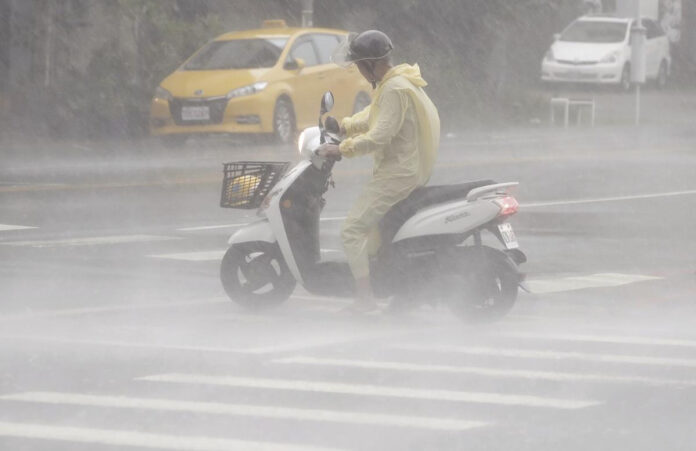Introduction
In 2024, Taiwan experienced the highest number of typhoon landfalls since 2008, with three typhoons making direct contact with the island. This surge in typhoon activity is part of a broader trend marked by later-season storms and shifting weather patterns, as reported by Taiwan’s Central Weather Administration (CWA).
Three Typhoon Landfalls in 2024: A Historic First for October
According to the CWA, the island recorded three typhoon landfalls this year—Typhoon Gaemi on July 25, Typhoon Krathon on October 3, and Typhoon Kong-rey on October 23. The landfall of two typhoons in October marked the first time in Taiwan’s history that two typhoons made landfall in the same month.
- Typhoon Gaemi: Hit Yilan on July 25, bringing heavy rain and strong winds to the region.
- Typhoon Krathon: Struck Kaohsiung on October 3, causing significant damage and disruptions.
- Typhoon Kong-rey: Impacted Taitung on October 23, with intense rainfall and winds.
This uptick in landfalls is part of an overall increase in storm activity this year, which stands in contrast to the lower number of typhoons that hit Taiwan in recent years.
Typhoon Trends: Late-Season Storms and Warmer Pacific Waters
While the total number of typhoons in 2024—25 named storms in the Western Pacific—was consistent with previous years, the timing and patterns of the storms have changed. The CWA highlighted that most of the storms this year formed in August or later, with the highest concentration of typhoons in the second half of the year. This is a shift from previous years, when typhoon activity was more evenly distributed throughout the season.
Warmer Waters and La Niña Signals
The increased number of late-season storms was partly attributed to warmer-than-average sea surface temperatures in the Western Pacific, which create favorable conditions for typhoon development. According to Lo Tzu-ting, head of the CWA’s climate forecasting division, this could be indicative of a developing La Niña weather pattern. La Niña is often associated with more intense storm activity, particularly in the Pacific Ocean.
Additionally, typhoons have been forming farther east this year, meaning they have more time to intensify before reaching Taiwan. This trend could lead to more destructive storms in the future, as these typhoons gain strength over the ocean before making landfall.
Historical Context: Typhoon Landfalls in Taiwan
The frequency of typhoon landfalls in Taiwan has fluctuated over the years. Historically, Taiwan has seen more than three typhoon landfalls in some years, but the average number in recent years has been much lower.
- Past Decade: The average number of typhoon landfalls per year has been two or fewer.
- 2020-2022: Taiwan recorded a rare three-year period in which no typhoons made landfall.
This makes the three landfalls in 2024 a significant outlier, pointing to a potential change in long-term climate patterns or an increase in extreme weather events linked to global warming.
Table: Summary of Typhoon Activity in 2024
| Typhoon Name | Landfall Date | Location of Landfall | Storm Category | Impact |
|---|---|---|---|---|
| Typhoon Gaemi | July 25, 2024 | Yilan | Strong Typhoon | Heavy rain, strong winds |
| Typhoon Krathon | October 3, 2024 | Kaohsiung | Severe Typhoon | Property damage, flooding |
| Typhoon Kong-rey | October 23, 2024 | Taitung | Typhoon | Flooding, widespread disruption |
What Does This Mean for Taiwan’s Future?
The events of 2024 have raised important questions about the future of typhoon activity in Taiwan. Experts believe that the island will continue to face challenges from increasingly powerful storms as sea temperatures rise, and weather patterns shift. The CWA has emphasized the need for improved storm preparation and resilience measures to better protect lives and property.
In addition, the increasing frequency of late-season typhoons and the growing strength of storms forming further east could change the way Taiwan prepares for typhoon seasons in the coming years.
FAQ
1. Why did Taiwan experience three typhoon landfalls in 2024?
The increase in typhoon landfalls is partly due to warmer-than-usual sea temperatures in the Pacific, which foster stronger storms. The later development of storms also contributed to more typhoons making landfall later in the season.
2. How do La Niña conditions affect typhoon activity?
La Niña conditions tend to increase typhoon activity by creating favorable conditions in the Pacific for storms to form and intensify. This can lead to stronger and more frequent typhoons impacting regions like Taiwan.
3. Is it common for two typhoons to make landfall in Taiwan in the same month?
No, the two typhoons that hit Taiwan in October 2024 marked the first time in Taiwan’s recorded history that this has occurred.
4. How does Taiwan typically prepare for typhoons?
Taiwan implements emergency preparedness measures such as issuing warnings, evacuating at-risk populations, and preparing shelters. Local governments also take steps to ensure that infrastructure can withstand the impacts of high winds and heavy rain.
5. Has Taiwan experienced periods with no typhoons?
Yes, Taiwan experienced a rare three-year period (2020-2022) during which no typhoons made landfall. This was an unusual break, as Taiwan typically faces typhoons every year.
Conclusion
The 2024 typhoon season has been a stark reminder of Taiwan’s vulnerability to extreme weather events. With three typhoons making landfall and several others developing later in the season, experts are calling for more robust climate adaptation strategies to safeguard the island’s infrastructure and residents. As climate change continues to affect weather patterns, Taiwan’s typhoon season could become even more unpredictable and intense in the years ahead.
For more updates on typhoon activity and weather patterns in Taiwan, visit CialisWeb.
